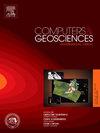深克里格法在地统计学空间插值中的应用
IF 4.2
2区 地球科学
Q1 COMPUTER SCIENCE, INTERDISCIPLINARY APPLICATIONS
引用次数: 0
摘要
在当前以空前丰富的数据为标志的时代,尽管在充分捕捉当代多元数据集中发现的复杂关系方面存在局限性,但在地质统计学的一些应用中仍然使用克里格等传统方法。尽管深度神经网络(dnn)在捕获不同领域的复杂非线性特征关系方面表现出了显著的效果,但它们在地统计学应用中的成功仍然有限。这在一定程度上可归因于两个重大挑战。首先,这些黑箱模型的不透明性质引起了对关键决策的输出可靠性的关注,因为模型的内部工作仍然不太可解释。其次,深度神经网络不能明确地捕捉数据中的空间依赖关系。为了解决这些缺点,我们采用了一种被称为Deepkriging的方法来解释最近提出的空间深度神经网络,并将其应用于干体岩石密度估计,这是矿产资源估计中经常被忽视的一个方面。通过我们对Shapley值的适应(批量Shapley值),我们克服了量化特征重要性的重大计算挑战。这种方法考虑了特征相互作用,这对dnn至关重要,因为它们依赖于高阶相互作用,特别是在像矿产资源估计这样的复杂应用中。此外,我们在3D情况下证明,无论是在纯空间情况下还是在辅助变量存在的情况下,就均方误差而言,深度克里格法都优于普通克里格法和回归克里格法。我们的研究产生了第一个解释深度克里格法的方法,它适用于任何具有大量特征的模型;通过在3D应用程序中的几个比较,它重申了Deepkriging的有效性,最重要的是;它强调了深度神经网络的适应性和更广泛的潜力,以满足地质统计学中的各种挑战。本文章由计算机程序翻译,如有差异,请以英文原文为准。

Interpreting Deepkriging for spatial interpolation in geostatistics
In the current era marked by an unprecedented abundance of data, the usage of conventional methods such as kriging persists in some applications of geostatistics, despite their limitations in adequately capturing the intricate relationships found in contemporary, multivariate datasets. Although deep neural networks (DNNs) have demonstrated remarkable efficacy in capturing complex nonlinear feature relationships across various domains, their success in geostatistical applications has been limited. This can be partly attributed to two significant challenges. Firstly, the opaque nature of these black box models raises concerns about the dependability of their outputs for critical decision-making, as the inner workings of the model remain less interpretable. Secondly, DNNs do not explicitly capture spatial dependencies within data. To address these shortcomings, we employ a methodology to interpret the recently proposed spatial DNNs known as Deepkriging, and we apply it to dry bulk rock density estimation, an often-overlooked aspect in mineral resource estimation. Through our adaptation of Shapley values—Batched Shapley—we overcome significant computational challenges to quantify feature importance for Deepkriging. This approach takes into account feature interactions, which is crucial for DNNs, as they rely on high-order interactions, especially in a complex application like mineral resource estimation. Additionally, we demonstrate in the 3D case that Deepkriging outperforms ordinary kriging and regression kriging in terms of mean squared errors, in both the purely spatial case and in the presence of auxiliary variables. Our study produces the first methodology to interpret Deepkriging, which is suitable for any model with a large number of features; it reaffirms the efficacy of Deepkriging through several comparisons in a 3D application, and most importantly; it underscores the adaptability and broader potential of DNNs to cater to various challenges in geostatistics.
求助全文
通过发布文献求助,成功后即可免费获取论文全文。
去求助
来源期刊

Computers & Geosciences
地学-地球科学综合
CiteScore
9.30
自引率
6.80%
发文量
164
审稿时长
3.4 months
期刊介绍:
Computers & Geosciences publishes high impact, original research at the interface between Computer Sciences and Geosciences. Publications should apply modern computer science paradigms, whether computational or informatics-based, to address problems in the geosciences.
 求助内容:
求助内容: 应助结果提醒方式:
应助结果提醒方式:


